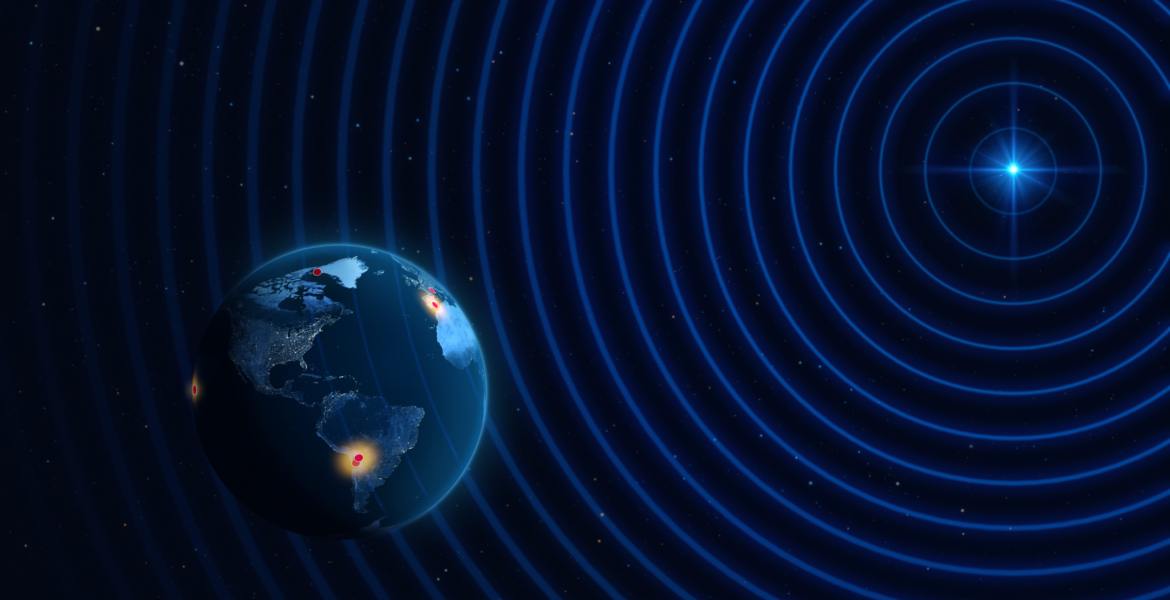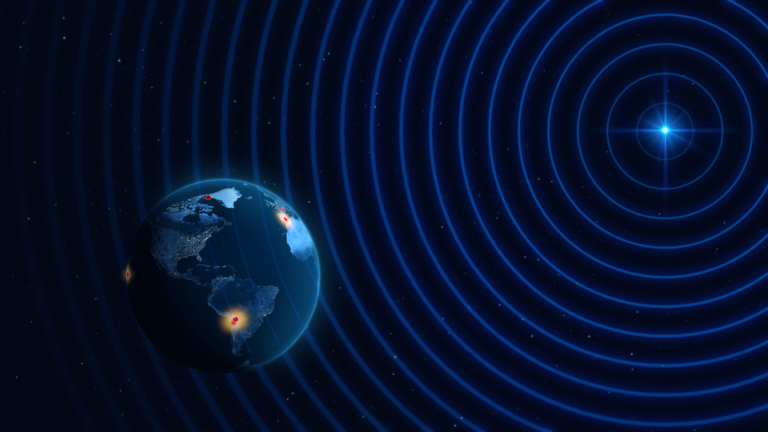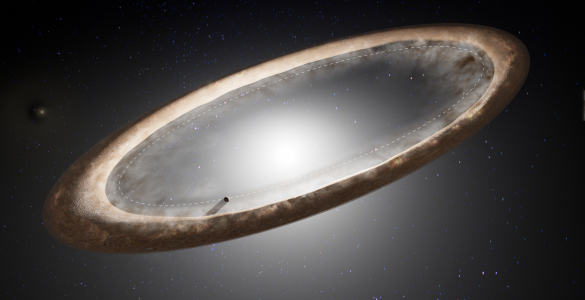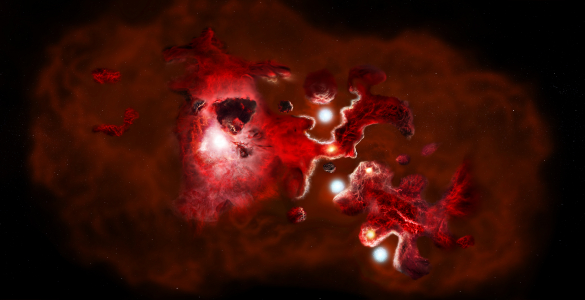The Event Horizon Telescope (EHT) Collaboration has conducted test observations with the highest resolution ever obtained from the surface of the Earth. This feat was achieved by detecting light from distant galaxies at a frequency of around 345 GHz, equivalent to a wavelength of 0.87 mm. The Collaboration estimates that, in the future, they will be able to make black hole images 50% more detailed than before. This improvement will sharpen images of supermassive black holes, and allow astronomers to image more black holes than ever before. The new detections, part of a pilot experiment, were published today in The Astronomical Journal.
Starting in 2019, the EHT Collaboration released images of the supermassive black hole at the center of the M87 galaxy, and in 2022, images of Sgr A*, the black hole at the heart of our Milky Way galaxy. These were obtained by linking together multiple radio observatories across the planet, using a technique called very-long-baseline interferometry (VLBI) , to form a single “Earth-sized” virtual telescope.
To get higher-resolution images, astronomers typically rely on bigger telescopes — or a larger distance between telescopes used together to observe, as part of an interferometer. But since the EHT was already the size of the Earth, using telescopes from around the globe, increasing the resolution of their ground-based observations called for a different approach. Astronomers know that the resolution of a telescope can also be increased by observing light at a shorter wavelength — and that’s what the EHT Collaboration has now done.
To show that they could make high resolution detections at short wavelengths of 0.87 mm, the Collaboration conducted test observations of distant, bright galaxies at this wavelength. Rather than using the full EHT array, they employed two smaller “subarrays”, including the Atacama Large Millimeter/submillimeter Array (ALMA) and the Atacama Pathfinder EXperiment (APEX) in the Atacama Desert in Chile. The U.S. National Science Foundation National Radio Astronomy Observatory (NSF NRAO) is a partner in ALMA. Other facilities used include the IRAM 30-meter telescope in Spain and the NOrthern Extended Millimeter Array (NOEMA) in France, as well as the CfA/ASIAA Greenland Telescope and CfA/ASIAA Hawaiʻi’s Submillimeter Array.
“With the EHT, we saw the first images of black holes using the 1.3-mm wavelength observations, but the bright ring we saw, formed by light bending in the black hole’s gravity, still looked blurry because we were at the absolute limits of how sharp we could make the images,” said lead author Alexander Raymond, previously a postdoctoral scholar at the Center for Astrophysics | Harvard & Smithsonian (CfA), and now the NASA/CalTech Jet Propulsion Laboratory, “At 0.87 mm, our images will be sharper and more detailed, which in turn will likely reveal new properties, both those that were previously predicted and maybe some that weren’t.”
In this pilot experiment, the Collaboration achieved observations with a detail as fine as 19 microarcseconds, meaning they observed at the highest-ever resolution from the surface of the Earth. While previous headlines may have been made about observations at higher resolutions, these combined signals from Earth and space based telescopes. They were not able to obtain images yet, though: while robust detections of light from several distant galaxies were obtained, not enough antennas were used in these test observations to be able to accurately reconstruct an image from them.
This technical test has opened up a new window to study black holes. With the full array, the EHT could see details as small as 15 microarcseconds, equivalent to seeing a grape on the Moon from the Earth. This means that, at 0.87 mm, they will be able to get images with a resolution about 50% higher than that of previously released M87* and SgrA* 1.3-mm images.There is also potential to observe smaller and more distant black holes than what the Collaboration has imaged thus far.
More Information
This Event Horizon Telescope (EHT) Collaboration research was presented in a paper by A. W. Raymond et al. published today in The Astronomical Journal.
The EHT Collaboration involves more than 400 researchers from Africa, Asia, Europe, North and South America, with around 270 participating in this paper. The international collaboration aims to capture the most detailed black hole images ever obtained by creating a virtual Earth-sized telescope. Supported by considerable international efforts, the EHT links existing telescopes using novel techniques — creating a fundamentally new instrument with the highest angular resolving power that has yet been achieved.
The EHT consortium consists of 13 stakeholder institutes; the Academia Sinica Institute of Astronomy and Astrophysics, the University of Arizona, the Center for Astrophysics | Harvard & Smithsonian, the University of Chicago, the East Asian Observatory, Goethe University Frankfurt, Institut de Radioastronomie Millimétrique, Large Millimeter Telescope, Max Planck Institute for Radio Astronomy, MIT Haystack Observatory, National Astronomical Observatory of Japan, Perimeter Institute for Theoretical Physics, and Radboud University.
The Atacama Large Millimeter/submillimeter Array (ALMA), an international astronomy facility, is a partnership of the European Southern Observatory (ESO), the U.S. National Science Foundation (NSF) and the National Institutes of Natural Sciences (NINS) of Japan in cooperation with the Republic of Chile. ALMA is funded by ESO on behalf of its Member States, by NSF in cooperation with the National Research Council of Canada (NRC) and the Ministry of Science and Technology (MOST) and by NINS in cooperation with the Academia Sinica (AS) in Taiwan and the Korea Astronomy and Space Science Institute (KASI). ALMA construction and operations are led by ESO on behalf of its Member States; by the National Radio Astronomy Observatory (NRAO), managed by Associated Universities, Inc. (AUI), on behalf of North America; and by the National Astronomical Observatory of Japan (NAOJ) on behalf of East Asia. The Joint ALMA Observatory (JAO) provides the unified leadership and management of the construction, commissioning and operation of ALMA.

















